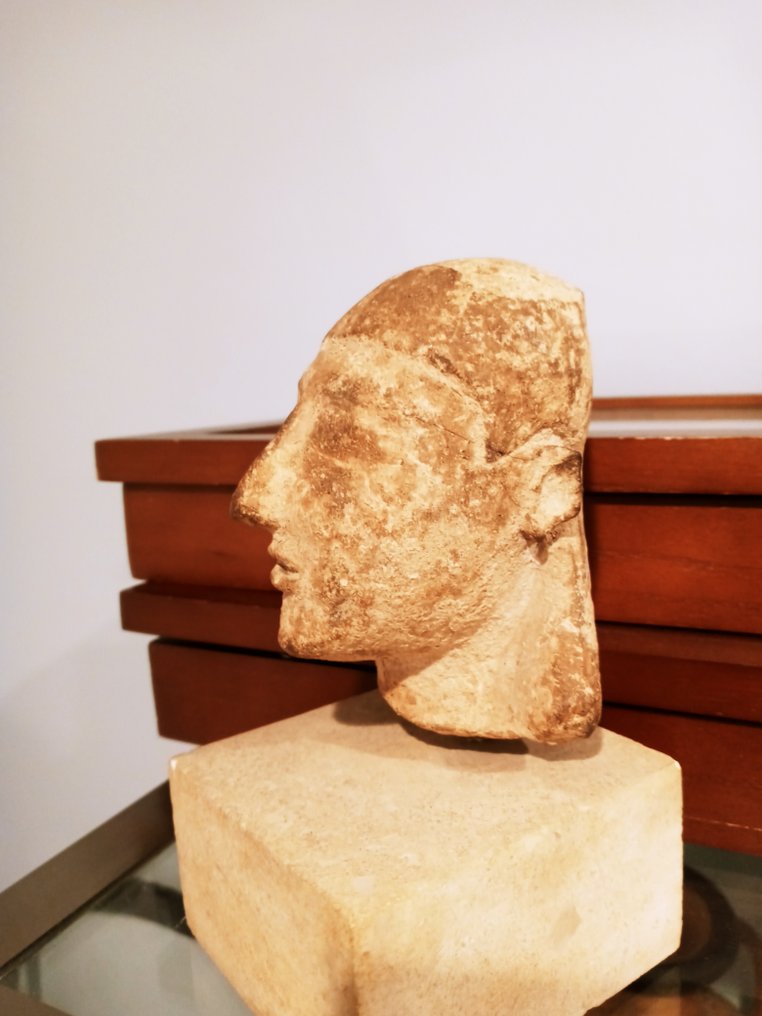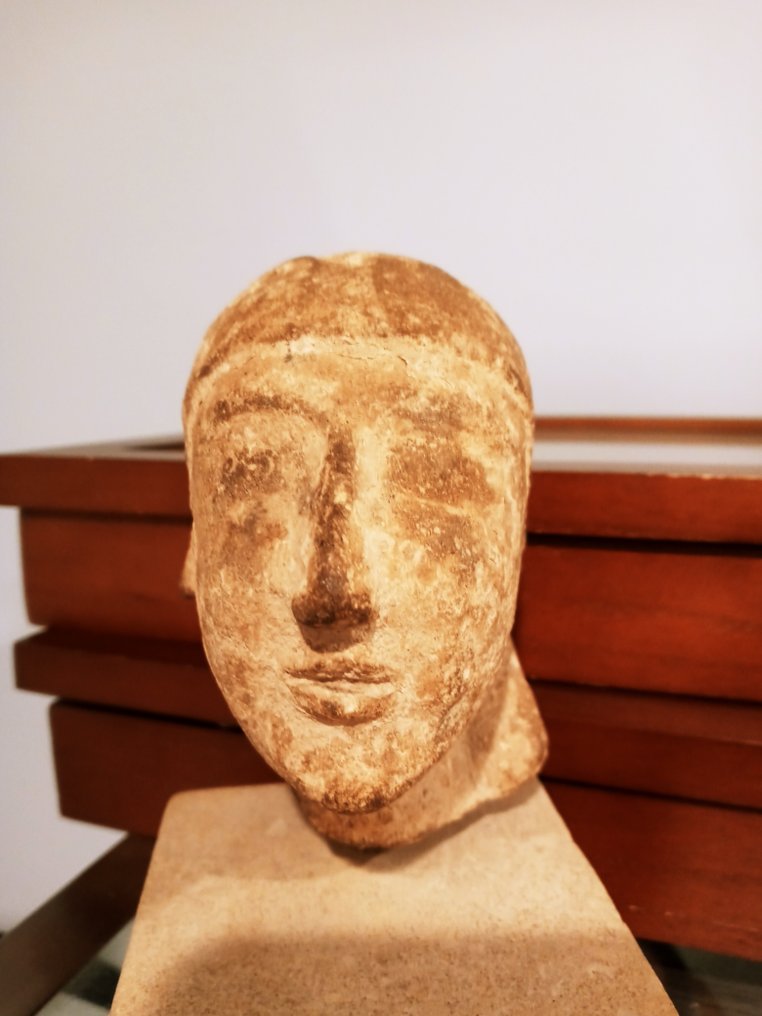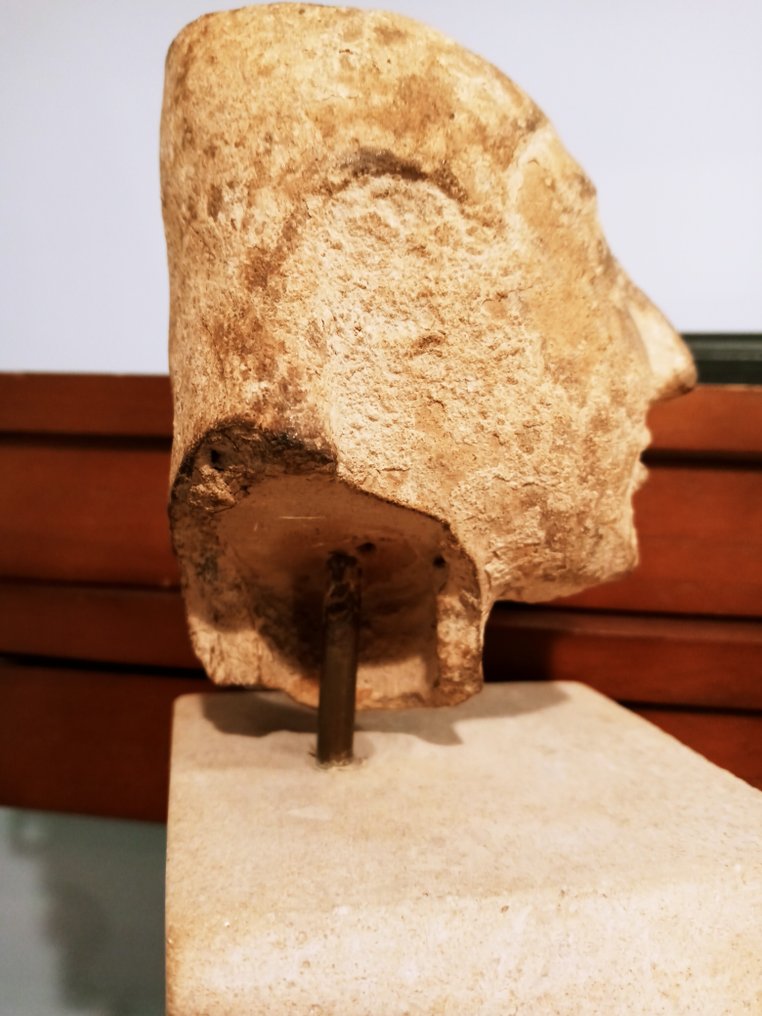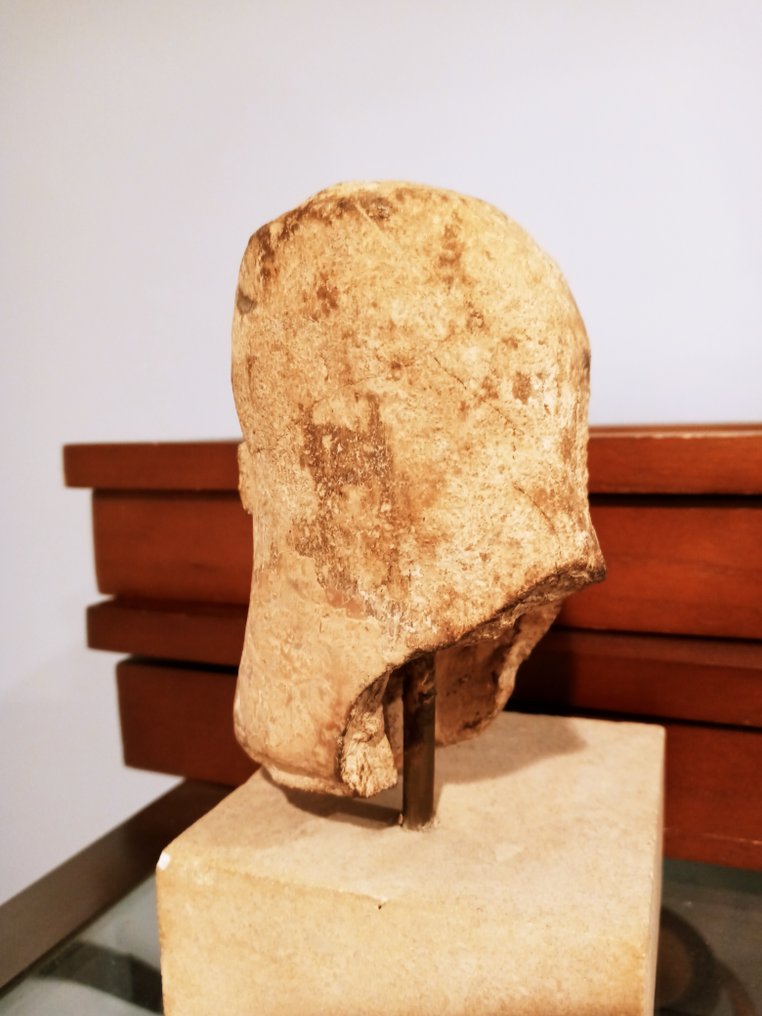Tutto bene
View translationArchaic Chypriotic Terracotta other - 11.4 cm
No. 92452947





Family gift from relatives who were art collectors in the late 1950s and 1960s .
In the vibrant tapestry of ancient Cyprus during the 6th century BCE, art flourished as a testament to the island's rich cultural tapestry and its dynamic interactions with neighboring civilizations. At the heart of this artistic landscape lay a diverse array of creative endeavors, each offering a window into the beliefs, customs, and achievements of Cypriot society.
Ceramics formed a cornerstone of Cypriot artistic expression during this period, with skilled potters fashioning a myriad of vessels adorned with intricate patterns and scenes drawn from mythology and daily life. Terracotta figurines, imbued with symbolic significance, served as votive offerings in religious rituals and guardians of the deceased in burial rites.
In the realm of sculpture, both in stone and bronze, Cypriot artisans captured the essence of gods, goddesses, and mythical creatures with a finesse that reflected the island's eclectic influences. These sculptures, whether gracing the halls of temples or adorning tombs, bore the marks of cultural exchange with Greece, Egypt, and the Near East.
Architecture, though less abundantly preserved, hinted at the grandeur of monumental structures such as temples and palaces, adorned with ornate columns and decorative carvings. Meanwhile, the mastery of metalworking manifested in the creation of tools, weapons, and exquisite jewelry, showcasing the island's prowess in craftsmanship.
Central to the flourishing of Cypriot art was the island's strategic position as a hub of trade and cultural exchange. Through commerce and interaction with neighboring civilizations, Cyprus absorbed and synthesized a multitude of artistic influences, forging a distinctive aesthetic that spoke to the island's cosmopolitan character.
In sum, Cypriot art from the 6th century BCE stands as a testament to the island's rich cultural heritage and its role as a crossroads of civilizations in the ancient Mediterranean world. Through its pottery, sculpture, architecture, and metalwork, this art offers a glimpse into the vibrant tapestry of ancient Cypriot society and the creative spirit that animated its people.
Family gift from relatives who were art collectors in the late 1950s and 1960s .
In the vibrant tapestry of ancient Cyprus during the 6th century BCE, art flourished as a testament to the island's rich cultural tapestry and its dynamic interactions with neighboring civilizations. At the heart of this artistic landscape lay a diverse array of creative endeavors, each offering a window into the beliefs, customs, and achievements of Cypriot society.
Ceramics formed a cornerstone of Cypriot artistic expression during this period, with skilled potters fashioning a myriad of vessels adorned with intricate patterns and scenes drawn from mythology and daily life. Terracotta figurines, imbued with symbolic significance, served as votive offerings in religious rituals and guardians of the deceased in burial rites.
In the realm of sculpture, both in stone and bronze, Cypriot artisans captured the essence of gods, goddesses, and mythical creatures with a finesse that reflected the island's eclectic influences. These sculptures, whether gracing the halls of temples or adorning tombs, bore the marks of cultural exchange with Greece, Egypt, and the Near East.
Architecture, though less abundantly preserved, hinted at the grandeur of monumental structures such as temples and palaces, adorned with ornate columns and decorative carvings. Meanwhile, the mastery of metalworking manifested in the creation of tools, weapons, and exquisite jewelry, showcasing the island's prowess in craftsmanship.
Central to the flourishing of Cypriot art was the island's strategic position as a hub of trade and cultural exchange. Through commerce and interaction with neighboring civilizations, Cyprus absorbed and synthesized a multitude of artistic influences, forging a distinctive aesthetic that spoke to the island's cosmopolitan character.
In sum, Cypriot art from the 6th century BCE stands as a testament to the island's rich cultural heritage and its role as a crossroads of civilizations in the ancient Mediterranean world. Through its pottery, sculpture, architecture, and metalwork, this art offers a glimpse into the vibrant tapestry of ancient Cypriot society and the creative spirit that animated its people.
Disclaimer
The seller guarantees and can prove that the object was obtained legally. The seller was informed by Catawiki that they had to provide the documentation required by the laws and regulations in their country of residence. The seller guarantees and is entitled to sell/export this object. The seller will provide all provenance information known about the object to the buyer. The seller ensures that any necessary permits are/will be arranged. The seller will inform the buyer immediately about any delays in obtaining such permits.
The seller guarantees and can prove that the object was obtained legally. The seller was informed by Catawiki that they had to provide the documentation required by the laws and regulations in their country of residence. The seller guarantees and is entitled to sell/export this object. The seller will provide all provenance information known about the object to the buyer. The seller ensures that any necessary permits are/will be arranged. The seller will inform the buyer immediately about any delays in obtaining such permits.